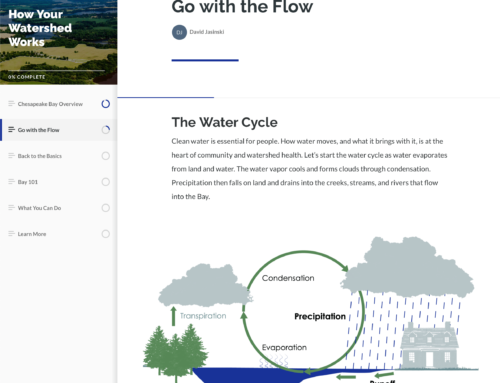The National Park Service’s Narrative Blitz, mentioned in our April newsletter, featured presentations that hit on a number of very important communication tools. Don’t worry if you missed it; we are sharing three of the tools that we often use at Green Fin Studio: the ABT narrative template, the singular narrative, and the two audiences. Read May’s ABT feature here. This month, we’ll be covering the singular narrative and audience.
In Dr. Rick Nelson’s presentation called “The One Thing”, he described the importance of centering your story on one thing (one character, one problem, one call to action, etc.) to engage wider audiences. Randy Olson has pointed out before that singular narrative is about the structure of your story rather than the silencing of other voices or disregarding information that doesn’t conform to your perspective; it is finding the thread that runs through your story and making sure that it shines. It sounds simple, but picking one focus to frame your story around can be a hard task. This is where your story’s audience comes into play.
Dr. Nancy Knowlton spoke about “The Two Audiences”, or the outer circle and the inner circle. Your inner circle is the people in your lab, office, or specific field. They already know you and will listen to what you have to say regardless of how it’s presented because they are already engaged in the subject matter. In order to reach your outer circle, you have to use best practices and careful narrative structure to tell your story because they do not inherently care what you’re saying. With this outer circle, the group that you don’t interact with regularly, how do you know what “one thing” will successfully grab their attention?
Nancy Duarte summarized four distinct roles in her book resonate: doers, suppliers, influencers, and innovators. Doers instigate activities, suppliers bring resources, influencers change perceptions, and innovators generate ideas. Who are you communicating with and what do you want them to do once they’ve heard your story? Thinking in terms of roles can help you navigate that question. Connect that back to your audience’s priorities, and you’ve got your singular narrative.
At Green Fin Studio, we distill information about your audience with a tool that you are likely familiar with in a different context: Venn diagrams. The classic Venn diagram dates back to the 1880s. It was popularized by John Venn, a mathematician, logician and philosopher, to show how sets of information relate to one another. We use it to show the relationships between audience motivations and identify what will resonate most with our outer circle.

As an example, we recently led a Venn diagram exercise at a retreat about riparian buffers. The goal was to find overlapping narratives that would engage their three audiences and persuade them to install riparian buffers: people in rural areas, people in urban areas, and decision-makers. The idea being that while their audiences may seem drastically different, there are likely messages that resonate between two or even all three. We started with the three audience segments and brainstormed what was important to each.
Once we identified several priorities, we entered them in the Venn diagram format; priorities that were specific to each group on the outside and shared priorities where the circles overlapped. By using this format, we were able to zero in on the priorities that are common to every audience segment: outdoor recreation, flooding, and erosion. From here, the narrative begins to take shape. In order to reach this outer circle, we need to emphasize practical benefits to the community, not abstract environmental concerns (which likely wouldn’t get us past our inner circle). By thinking critically about our desired audience and what narratives enfold their priorities, we improve our chances of successful communication.
How can Green Fin Studio improve your strategic communications? Start the conversation by reaching out through our website or emailing us.

